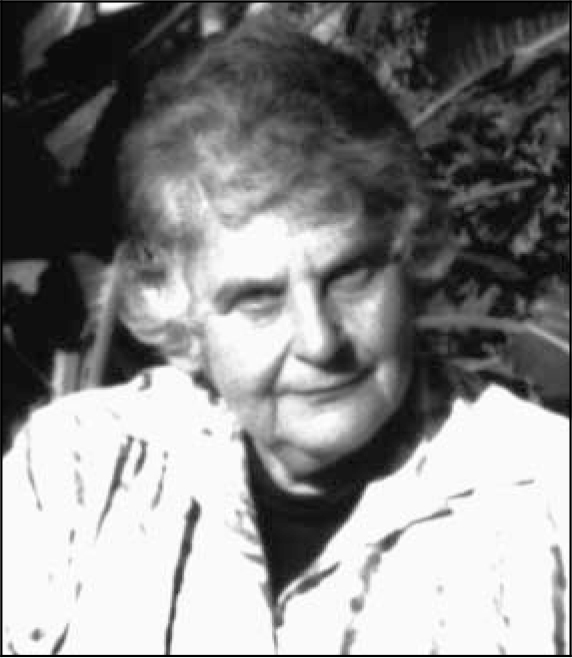
Dr Shoenberg was born on 25 September 1916. She was the youngest of the five children of Sir Isaac and Lady Shoenberg and enjoyed a happy childhood with three older brothers. She was a very gifted child who spent many hours in the print room of the British Museum studying Japanese prints. Her love of painting lasted throughout her life. At Newnham College, Cambridge, she read English and later archaeology and anthropology, intending to become an anthropologist. However, as she wrote in 1984 in a letter from the Australian outback where she was studying depression in the aboriginal population, she realised that she could not bear to be with people who lived in squalor with malnutrition and illiteracy without wanting to do something about it. As a result she switched to medicine.
She qualified in 1947 from King's College London and the West London School of Medicine and, after a short time in general practice, started to practise psychiatry at Fulbourn Hospital with Dr David Clark. She was then senior registrar at St Bartholomew's Hospital and Goodmayes Hospital. In 1958 she was appointed consultant psychiatrist at Claybury Hospital. The Adventure in Psychiatry by Denis Martin (1968) described changes that were already happening to varying degrees at Claybury: moving from the culture and ethos of a traditional mental hospital to a therapeutic community. This was essentially achieved at Claybury in three of the four general admission wards, the in-patient unit for patients with psychoneurosis and personality disorder, the psychogeriatric admission unit and some rehabilitation and long-stay wards. The impact of these changes is still relevant today and is well documented in the book of essays A Hospital Looks at Itself (1972), written by approximately 40 members of the staff and patients of Claybury Hospital and edited by Dr Shoenberg.
She found time throughout her life to travel widely, which gave scope for her abiding interest in all sorts of people and her considerable literary ability, as well as her capacity for friendship, her remarkable sense of humour and skill as a cartoonist. She visited many countries and had a particular love for Pakistan, the Pacific and Australia. On a year's sabbatical leave she went, with the support of the World Health Organization, to India to the National Institute for Mental Health and Neurosciences, to help in developing the psychiatric services, then the poor relation of the neurosciences.
In retirement, apart from her frequent travels, she retained a lively interest in all aspects of life and was active in the University of the Third Age. She visited with the Health Advisory Service and served on Mental Health Act review tribunals. She was a member of the Newnham College Associates. She kept in touch with many friends throughout the world and made each of us feel special. She retained her lively sense of humour to the end of her life. She never married. Dr Shoenberg died on 6 October 2005, following a fall at her home.



eLetters
No eLetters have been published for this article.